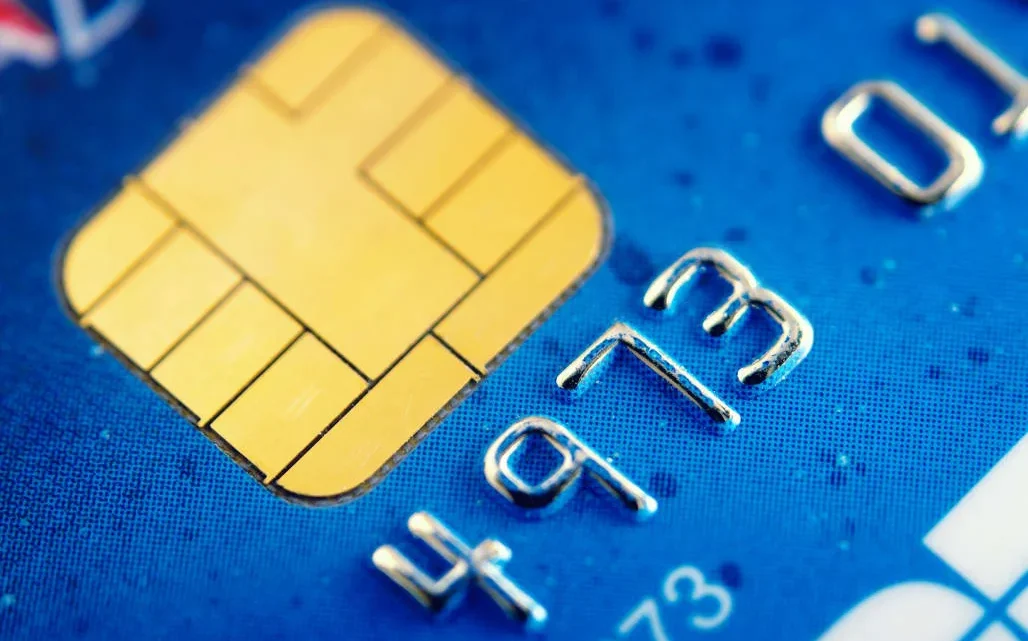
Understanding the Importance of Chip Pin Cards in Modern Payments
The landscape of financial transactions has evolved significantly, introducing advanced mechanisms that are reshaping the way consumers engage in monetary exchanges. These innovations not only offer convenience but also promise a higher level of assurance for users as they navigate their purchasing experiences. As the demand for secure transactions rises, understanding the elements that contribute to consumer safety becomes essential.
Among the most noteworthy advancements in payment systems are the incorporation of embedded microprocessors and encrypted personal identification methods. These elements work harmoniously to elevate the trust placed in electronic transactions, fostering a sense of confidence among users. Such configurations aim to mitigate unauthorized access while simplifying user interaction with various platforms.
By examining the layers of protection afforded by these systems, individuals can appreciate the sophisticated technology designed to safeguard their financial information. This exploration reveals how these components work together to create a robust framework that not only enhances transaction efficiency but also fortifies defenses against potential threats.
Benefits of Using Chip Pin Cards
The introduction of advanced payment methods has transformed the way we transact, offering both convenience and enhanced safety. These innovations have not only streamlined purchasing processes but also provided consumers with a higher level of protection against fraud, leading to increased trust in electronic payments.
Enhanced Security
One of the primary advantages of these modern payment instruments is the strong security they offer. Equipped with embedded microchips, they are far more resistant to counterfeiting compared to traditional magnetic stripe methods. Each transaction generates a unique code, making it exceedingly difficult for unauthorized users to replicate or exploit payment data.
Greater Convenience
The seamless nature of these payment options simplifies transactions for users. Whether purchasing in-store or online, customers benefit from quicker processing times and the ease of use that comes with advanced technology. Additionally, many merchants have adapted to these methods, resulting in widespread acceptance and making transactions smoother than ever.
How Chip Technology Enhances Security
The integration of advanced technology in payment systems has revolutionized the way transactions are conducted, offering an array of protections that enhance user trust. This sophisticated method not only simplifies the process of commerce but also introduces layers of defense against unauthorized access and fraud. With robust measures in place, consumers can feel more secure when engaging in financial exchanges.
Dynamic Data Generation
One of the fundamental advancements lies in the ability to generate unique data for each transaction. Unlike traditional methods that rely on static information, this innovation creates a new code every time a purchase is made. This means that even if the information were intercepted, it would be rendered useless for future transactions, drastically reducing the risk of compromise.
Encryption and Authentication
Furthermore, the incorporation of encryption techniques ensures that all sensitive details are safeguarded during transmission. This mechanism protects against potential eavesdropping and tampering, enhancing the overall trust in digital transactions. Additionally, various forms of authentication, such as biometric verification or two-factor prompts, offer extra layers of protection, making it substantially harder for fraudsters to gain access to financial resources.
In summary, the innovations introduced through this technology signify a remarkable shift towards safer monetary interactions, offering peace of mind to users and fostering confidence in a rapidly evolving digital economy.
The Impact on Fraud Prevention
The introduction of advanced payment technologies has significantly revolutionized how financial transactions are conducted, particularly in relation to combating illicit activities. Enhanced mechanisms are designed to create a more secure environment, ultimately decreasing the susceptibility to fraudulent behavior.
Reduction in Unauthorized Transactions
One of the primary advantages of these advanced systems is the drastic reduction in unauthorized or counterfeit transactions. Through sophisticated encryption and authentication methods, the likelihood of hackers or criminals exploiting vulnerabilities is greatly diminished. This leads to increased trust among consumers and merchants alike.
Enhanced Customer Verification
Moreover, the integration of dynamic verification processes ensures that each transaction is meticulously scrutinized. Real-time data analysis allows for the immediate identification of suspicious activities, enabling immediate actions to prevent potential losses. As a result, users can transact with a greater sense of confidence, knowing that stringent measures are in place to safeguard their financial information.
Overall, the evolution of payment technology plays a crucial role in promoting a safer marketplace, making it increasingly difficult for fraudsters to thrive in this new digital landscape.
Understanding the User Experience Advantages
The incorporation of advanced payment methods has significantly transformed how individuals engage in financial transactions. This evolution enhances convenience, speeds up the process, and increases user satisfaction. By streamlining interactions, consumers can complete purchases effortlessly, leading to an overall improved experience.
One of the primary enhancements in user interaction is the swift transaction capability. With intuitive design and efficient processing, users are no longer faced with lengthy waits at checkout points. This acceleration not only saves time but also reduces friction during the purchasing journey.
Moreover, incorporating these modern systems fosters a sense of empowerment among users. The ability to manage finances through user-friendly interfaces and applications enables individuals to keep track of their spending with ease, leading to better financial awareness and control.
This innovative approach also enriches the experience by providing added layers of customization. Users can take advantage of personalized settings and options, making transactions not only secure but tailored to individual preferences, thereby enhancing overall satisfaction.
In summary, the advancements in transaction methods significantly elevate the user experience. By focusing on speed, control, and personalization, these innovations create a more engaging and fulfilling journey for consumers in their everyday financial activities.
Comparing Chip Cards to Magnetic Stripes
In the realm of payment technology, two prevalent methods have evolved to facilitate transactions. The transition from one method to another has ignited discussions on various aspects such as reliability, security protocols, and user convenience. This section delves into the primary distinctions between these two mechanisms, highlighting their respective attributes and drawbacks.
Technology Overview
The foundational difference lies in the underlying technology each employs. The traditional method relies on a static format, where data is embedded on a physical strip. In contrast, the modern alternative utilizes a dynamic approach, generating unique transaction codes for each interaction. This fundamental shift enhances accuracy and minimizes the risk of fraudulent activities.
Vulnerability and Protection
Ease of Duplication: The classic system is notably more susceptible to duplication, as its information is accessible during each transaction. Conversely, the latter method significantly bolsters protection through encryption, making it exceedingly challenging for malicious entities to replicate the essential data.
User Experience: While the traditional method may offer quicker interactions in specific contexts, the newer technology presents a more comprehensive safeguard, ultimately fostering consumer confidence. As digital transactions continue to gain traction, understanding these variations becomes increasingly crucial for informed decision-making.
Future Trends in Payment Security
As the landscape of financial transactions evolves, innovative approaches to safeguarding user information and ensuring transactional integrity are rapidly emerging. The intersection of technology and finance presents new opportunities for enhancing trust and efficiency in monetary exchanges.
Biometric Verification will play a pivotal role in future transactional processes. The adoption of fingerprint scanning, facial recognition, and voice identification not only strengthens user authentication but also adds convenience for consumers. These methods provide robust layers of defense against unauthorized access, reducing the reliance on traditional methods such as passwords.
Furthermore, the integration of Blockchain Technology is transforming the way financial records are stored and managed. By leveraging decentralized ledgers, organizations can ensure transparency and reduce the risk of fraud. This approach not only enhances the reliability of information but also streamlines reconciliation processes across various platforms.
Advancements in Artificial Intelligence will bolster the ability to detect fraudulent activities in real-time. Machine learning algorithms analyzing transaction patterns can identify anomalies and flag suspicious behavior, empowering institutions to act swiftly against potential threats. This proactive stance revolutionizes the traditional reactive measures often employed in the financial sector.
Lastly, a rise in Contactless Payments is anticipated, driven by consumer demand for speed and efficiency. While this method enhances convenience, it also necessitates sophisticated encryption measures to safeguard user data during transactions. Adopting strong cryptographic protocols will be essential to maintaining consumer confidence in these advanced payment methods.
In summary, the future of transactional integrity depends on innovative solutions that prioritize user protection and streamline processes. As technology continues to advance, the financial industry must adapt to emerging trends, fostering a secure environment for all participants in the economic landscape.
Questions and answers: Chip pin cards
What are chip pin cards and how do they work?
Chip pin cards, also known as EMV cards (Europay, MasterCard, and Visa), are credit or debit cards embedded with a microchip that provides added security for transactions. The chip generates a unique transaction code for each purchase, which makes it difficult for fraudsters to replicate. When making a purchase, the cardholder enters their Personal Identification Number (PIN) to authenticate the transaction. This two-factor authentication method—combining the chip and the PIN—enhances security compared to traditional magnetic stripe cards.
What benefits do chip pin cards offer to consumers?
Chip pin cards provide several benefits to consumers, primarily enhanced security and reduced risk of fraud. The use of a microchip and a PIN makes it harder for unauthorized users to make purchases, leading to greater peace of mind. Additionally, chip pin cards can be used for contactless payments in some cases, offering convenience. Furthermore, merchants who accept chip cards may also experience lower chargeback rates and better transaction reliability due to the robust technology behind these cards.
Are chip pin cards safer than traditional magnetic stripe cards?
Yes, chip pin cards are generally considered to be safer than traditional magnetic stripe cards. While magnetic stripe cards store static data that can be easily copied by skimming devices, chip cards dynamically generate transaction codes for each use, which significantly reduces the risk of fraud. Additionally, the requirement for a PIN adds an extra layer of verification, making it more difficult for someone to use a stolen card without the corresponding PIN.
What should I do if my chip pin card is lost or stolen?
If your chip pin card is lost or stolen, it is critical to act quickly to mitigate potential fraud. First, contact your bank or card issuer immediately to report the loss. They will usually freeze your account to prevent unauthorized transactions and may issue you a replacement card. Also, monitor your account statements for any unauthorized charges and report them to your bank. Additionally, consider placing a fraud alert on your credit report to protect against identity theft.
Will replacing my old magnetic stripe card with a chip pin card improve my overall payment experience?
Replacing your old magnetic stripe card with a chip pin card can significantly enhance your payment experience. Not only do chip pin cards offer improved security against fraud, but they are often more widely accepted in international transactions, making travel easier. Moreover, many chip pin cards now come with added features like contactless payment options, which allow for quicker transactions. Overall, transitioning to a chip pin card can lead to a safer and more efficient payment experience.
What are the main benefits of using chip pin cards over traditional magnetic strip cards?
Chip pin cards offer several advantages over traditional magnetic strip cards. Firstly, they provide enhanced security due to their embedded microchip, which generates a unique transaction code for each purchase, making it extremely difficult for fraudsters to clone the card. Secondly, chip pin cards require a Personal Identification Number (PIN) for transactions, adding an extra layer of authentication. This means even if someone gains physical access to your card, they cannot use it without knowing your PIN. Additionally, chip cards can be used for both contact and contactless payments, making them versatile for various purchasing situations. Overall, these benefits lead to a significant reduction in card fraud and boost consumer confidence in using their cards for transactions.
How do the security features of chip pin cards protect against fraud compared to non-chip cards?
The security features of chip pin cards are designed to minimize the risk of fraud significantly. Unlike non-chip cards, which rely solely on magnetic stripes that can be easily copied, chip pin cards use an embedded microchip to store and encrypt data. Each time a transaction is made, the chip communicates with the card reader to generate a unique cryptographic code, which is invalidated after use, making duplication virtually impossible. Additionally, the requirement of entering a PIN adds a crucial layer of security. Even if a thief manages to steal the physical card, they would still need to know the PIN in order to complete a transaction. Moreover, chip cards are compliant with EMV (Europay, MasterCard, and Visa) standards, which further enhance their security protocols during payments. This combination of dynamic data processing and PIN requirement significantly reduces the likelihood of unauthorized transactions and gives consumers greater peace of mind.
What is the difference between a chip-and-pin card and a chip-and-signature card?
A chip-and-pin card requires the cardholder to enter a PIN for authentication during transactions, adding an extra layer of security. In contrast, a chip-and-signature card relies on the cardholder’s signature to authorize purchases. Both types of cards use EMV chip technology, which generates a unique code for each transaction, making credit card fraud more difficult. However, chip-and-pin credit cards offer higher security due to the required PIN authentication.
How does EMV chip technology help prevent credit card fraud?
EMV chip technology helps prevent credit card fraud by creating a unique code for each transaction. Unlike traditional magstripe cards, which store static information that can be easily copied, the EMV chip dynamically generates transaction-specific codes. This makes it much harder for fraudsters to create counterfeit cards. Major credit card companies have adopted EMV standards to improve the security of card transactions and reduce the risk of fraud.
Do credit card transactions using a chip-and-pin card require a PIN every time?
Most credit card transactions using a chip-and-pin card require the cardholder to enter their PIN for authentication, especially in places like Europe. However, in some regions, such as the U.S., chip-and-signature is more common, and a PIN may not be required. For certain contactless or low-value transactions, a PIN may also be bypassed. It’s important to know the specific requirements of your credit card issuer.
Why are chip-and-pin credit cards considered more secure than traditional magstripe cards?
Chip-and-pin credit cards are considered more secure because they use EMV chip technology, which generates a unique code for each transaction. This dynamic data makes it nearly impossible to duplicate the card information, unlike magstripe cards, which store static data that can be easily copied by fraudsters. The required PIN also adds an extra layer of authentication, making unauthorized card use more difficult.
What do I need to know about using a chip-and-pin credit card abroad?
When using a chip-and-pin credit card abroad, especially in regions like Europe where chip-and-pin technology is standard, you’ll typically need to enter a PIN for transactions. Many places abroad accept EMV chip cards, and having a chip-and-pin card will make transactions smoother. If you only have a chip-and-signature card, some merchants may still accept it, but you should check with your credit card issuer before traveling to ensure your card will work internationally.








